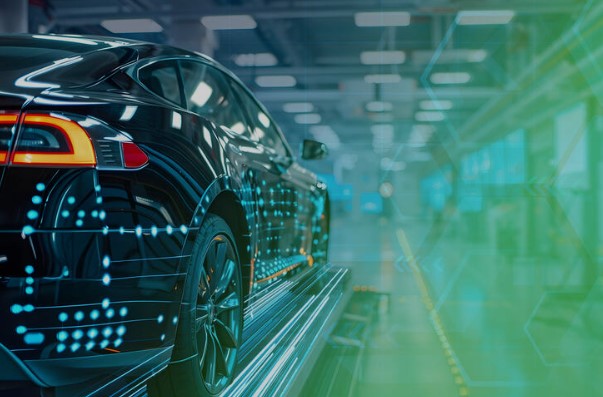3 Automotive Trends That Will Dominate in 2025
Introduction: The Evolution of the Automotive Industry by 2025
The automotive industry is undergoing an unprecedented transformation. With the rapid pace of technological advancements, environmental concerns, and evolving consumer preferences, the cars of 2025 will look and function quite differently from those on the roads today. As we look toward the future, three major trends are expected to dominate the automotive landscape in 2025: the rise of electric vehicles (EVs), the growth of autonomous driving technology, and the shift toward shared and on-demand mobility services.
This article will explore these three trends in detail, examining the forces driving their growth, the impact they will have on consumers, and how they will shape the future of transportation.
Trend 1: The Rise of Electric Vehicles (EVs)
Electric vehicles are set to become a dominant force in the automotive industry by 2025, as automakers race to meet stricter emissions regulations and respond to growing consumer demand for sustainable transportation options. The widespread adoption of EVs is driven by advances in battery technology, an expanded charging infrastructure, and governments’ increasing emphasis on clean energy solutions.
Key Drivers of EV Adoption in 2025:
1. Battery Technology and Range Improvements:
o The key to the widespread adoption of electric vehicles is advancements in battery technology. By 2025, battery efficiency will have improved significantly, providing EVs with longer ranges and reducing charging times. Solid-state batteries, which promise higher energy densities and faster charging speeds, are expected to enter the market.
o With batteries that can last up to 500 miles on a single charge, consumers will no longer have to worry about range anxiety, making EVs more attractive for long-distance travel.
2. Charging Infrastructure Expansion:
o The expansion of charging infrastructure will be critical in supporting the transition to electric mobility. By 2025, fast-charging networks will be widespread, allowing drivers to quickly recharge their vehicles in a matter of minutes, much like refueling a traditional gasoline-powered car.
o Public and private partnerships will drive the growth of these charging networks, with installations in urban centers, along highways, and at workplaces.
3. Government Policies and Incentives:
o Governments around the world will continue to incentivize the purchase and use of electric vehicles through tax credits, rebates, and other subsidies. Many countries, particularly in Europe and Asia, will set ambitious targets for phasing out internal combustion engine vehicles and shifting to electric transportation.
o Regulatory frameworks will be put in place to ensure automakers meet emissions standards, and penalties for non-compliance will drive the transition to EVs.
4. Consumer Demand for Sustainable Transportation:
o Growing environmental consciousness among consumers will drive the demand for EVs. As climate change becomes a more urgent global issue, many people are looking for sustainable alternatives to traditional fossil fuel-powered vehicles.
o The appeal of lower operating costs, including reduced fuel expenses and less maintenance, will further accelerate the adoption of electric vehicles.
Impact on the Automotive Industry:
• Increased Competition: As demand for EVs grows, traditional automakers like General Motors, Ford, and Volkswagen will ramp up their electric vehicle offerings. New players, such as Rivian and Lucid Motors, will continue to innovate, forcing legacy manufacturers to adopt new technologies quickly.
• Job Shifts and New Skills: The transition to electric vehicles will require significant changes in manufacturing processes, supply chains, and the workforce. Skilled labor in areas such as battery technology, electrical engineering, and charging infrastructure will be in high demand.
• Environmental Impact: As the automotive industry shifts toward electric mobility, the reduction of greenhouse gas emissions will be one of the most significant benefits, contributing to global efforts to combat climate change.
Trend 2: The Rise of Autonomous Vehicles (Self-Driving Cars)
Autonomous driving technology, also known as self-driving or driverless technology, is expected to revolutionize the way we travel. By 2025, Level 3 autonomous vehicles (which can handle most driving tasks with human intervention only when needed) will become a reality for many consumers, and full Level 5 autonomy (no human intervention) could be on the horizon for certain use cases.
Key Drivers of Autonomous Vehicle Adoption in 2025:
1. Technological Advancements in AI and Machine Learning:
o At the core of autonomous vehicles is artificial intelligence (AI) and machine learning algorithms. By 2025, self-driving systems will be capable of recognizing complex road scenarios, responding to dynamic traffic conditions, and making decisions in real-time.
o Companies like Tesla, Waymo (Google), and Apple are heavily investing in AI-powered systems that will make fully autonomous driving a reality. These systems rely on sensors such as radar, lidar, cameras, and GPS to create a real-time map of the vehicle’s surroundings.
2. Advancements in Sensor and Connectivity Technology:
o Autonomous vehicles will rely on a combination of sensors to detect their environment. By 2025, these sensors will be far more refined, providing a clearer understanding of obstacles, pedestrians, and other vehicles.
o The development of 5G technology will allow for faster and more reliable vehicle-to-everything (V2X) communication, enabling vehicles to interact with other vehicles, infrastructure, and pedestrians in real time. This connectivity will improve safety and traffic flow.
3. Regulatory and Legal Developments:
o Governments will need to create clear regulations surrounding the testing, deployment, and use of autonomous vehicles. By 2025, many countries will have developed legal frameworks to govern autonomous driving, including rules for insurance, liability, and road safety.
o Legal challenges related to accidents and accidents involving autonomous vehicles will likely emerge, and regulatory bodies will be under pressure to address these issues.
4. Consumer Trust and Safety Concerns:
o A major hurdle for autonomous vehicles will be gaining consumer trust. By 2025, as more cars equipped with semi-autonomous features are on the road, consumers will have a better understanding of the safety and reliability of these technologies.
o Safety will remain the number one priority for developers. Self-driving cars must be proven to be as safe, if not safer, than human drivers, in order to gain widespread adoption.
Impact on the Automotive Industry:
• Disruption of Traditional Car Ownership Models: As self-driving cars become more accessible, shared mobility services (such as ride-hailing and car-sharing) will likely replace traditional car ownership for many individuals, particularly in urban areas.
• Increased Safety: Autonomous vehicles have the potential to reduce traffic accidents significantly. With AI systems designed to react faster than humans, autonomous vehicles could eliminate accidents caused by distracted driving, fatigue, or impaired driving.
• Changing Insurance Models: With autonomous driving, the traditional car insurance model could shift from being driver-based to being vehicle-based. Manufacturers may be required to carry more responsibility for accidents involving their vehicles.
Trend 3: Shared and On-Demand Mobility Services
By 2025, the automotive landscape will also see a shift toward shared and on-demand mobility services, driven by urbanization, cost-efficiency, and consumer preferences for convenience. The idea of owning a car is becoming less appealing for many, particularly in crowded cities where parking and congestion are major issues.
Key Drivers of Shared Mobility:
1. Urbanization and Changing Lifestyles:
o As more people move into cities, car ownership will become less practical. With limited parking space and heavy traffic congestion, many urban dwellers will prefer to use on-demand mobility services, such as ride-hailing and car-sharing, rather than owning a car.
o Younger generations, in particular, are showing a preference for shared mobility. With the rise of platforms like Uber, Lyft, and shared bicycle and scooter services, people are choosing to access vehicles as needed instead of committing to the long-term costs of ownership.
2. Advancements in Mobility-as-a-Service (MaaS):
o Mobility-as-a-Service (MaaS) platforms will continue to grow, offering consumers the ability to plan, book, and pay for multiple modes of transportation from a single app. These platforms integrate various forms of transportation, including buses, bikes, taxis, and rental cars, to provide seamless door-to-door mobility solutions.
o MaaS platforms will be powered by AI and data analytics, allowing for smarter routing and scheduling to optimize the use of vehicles and reduce congestion.
3. Sustainability and Cost Efficiency:
o Shared mobility services will align with the growing demand for sustainability. By reducing the number of privately owned cars on the road, cities can lower carbon emissions and decrease the environmental impact of transportation.
o Additionally, on-demand mobility offers a cost-effective alternative to car ownership, particularly for those who do not need to use a vehicle every day. This trend will be especially appealing in high-cost areas where vehicle maintenance, insurance, and parking fees are significant.
Impact on the Automotive Industry:
• New Business Models: Traditional automakers will increasingly shift toward providing shared mobility services, either by partnering with tech companies or launching their own ride-hailing and car-sharing platforms.
• Decline in Car Sales: As shared mobility becomes more mainstream, overall car sales may slow, particularly for personal vehicles. Automakers will need to adapt their business models to cater to this shift in consumer preferences.
• Improved City Mobility: The integration of shared and on-demand services will lead to more efficient city mobility, reducing traffic congestion and improving overall quality of life in urban areas.
Conclusion: The Automotive Industry’s Roadmap to 2025 and Beyond
As we approach 2025, the automotive industry will undergo a profound transformation driven by three key trends: the rise of electric vehicles, the advancement of autonomous driving technology, and the growing demand for shared mobility services. These trends will reshape how we think about transportation, providing safer, more sustainable, and more efficient solutions for the future.
While challenges remain, the innovations of tomorrow will lead to an automotive ecosystem that is cleaner, smarter, and more interconnected, making transportation more accessible and less impactful on the environment.



